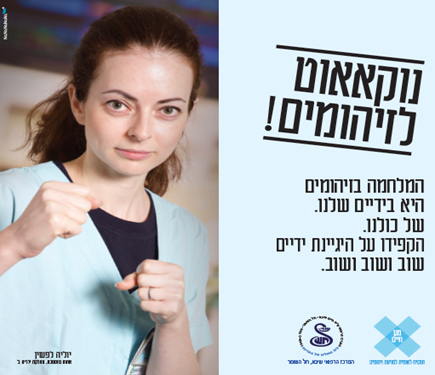The National Initiatives Fund:
Operation 'Life Shield'

The National Initiatives Fund:
Operation 'Life Shield'

The National Initiatives Fund was established in 2015 as a new independent civil initiative by a number of philanthropists and businessmen, with the idea of creating a cross-sector impact sphere in Israe l.
l.
The core value of the fund is social responsibility, wishing to create change in public issues at the national level by combining forces and resources of leading bodies from the business and social sectors, in cooperation with the government.
The fund was established with the assistance of Sheatufim. Sheatufim chairman Roni Douek got together with Yoav Sholev, a high-tech entrepreneur and Gary Greenspan, a philanthropist and social entrepreneur, choosing General (Res.) Orna Barbivai to serve as CEO of the fund. Gadi Lessin, president and CEO of Strauss Group, volunteered to serve as chairman.
The initiative is based on the collective impact model, in which collaboration between the three sectors and the benefits from the integration of their complementary capabilities can generate measurable change in relatively short periods of time. The collective impact model brings together the leadership, professionalism and the specific content expertise of the participants in the chosen field and creates synergy which enables the fund to initiate, develop and execute projects on a systemic and national level.
During 2020, in the midst of the Corona crisis, Operation Vashamarta was established by Sheatufim, Zionism 2000 and the National Initiatives Fund. Following this, a joint decision was made to merge the fund and its activities into Sheatufim, while adjusting the Models of operation.
The "Life Shield"
After a short period of interviewing various elements in the Israeli public, the fund identified its first project for action: combating Hospital Acquired Infection (HAI). According to the State Comptroller's report of 2013, in Israel, between 4,000 and 6,000 people die every year from infections in hospital – almost 10 times more than the sum total of deaths caused by road accidents, Israel Defense Force casualties and violence. About 40,000 patients in health care centers (7% -10%) suffer from HAI.
Hospital Acquired Infection (HAI). According to the State Comptroller's report of 2013, in Israel, between 4,000 and 6,000 people die every year from infections in hospital – almost 10 times more than the sum total of deaths caused by road accidents, Israel Defense Force casualties and violence. About 40,000 patients in health care centers (7% -10%) suffer from HAI.
In recent years there has been an increase in the quantity, severity and durability of the iDuring 2020, in the midst of the Corona crisis, Operation Vashmeret was established by Shifatim, Zionism 2000 and the National Enterprises Fund. Following this, a joint decision was made to merge the fund and its activities into shares, while adjusting the concepts of operation of shares.nfections, so that the problem is getting worse. However, according to the comptroller's report, this is not inevitable. Between 25% to 75% of hospital acquired infections can be prevented, thereby saving between 1,000 and 4,500 lives a year.
The occurance of HAI in Israel is much higher than in other OECD countries. This is a painful and burning problem, which, although it has been on the public agenda, has not been effectively dealt with. This is a complex social problem, which involves both the medical and the administrative staff in the hospitals, as well as patients and visitors from all parts of Israeli society.
At the outset, the challenging but achievable goal of reducing infection by 50% was set.
It was decided to initiate the plan by implementing pilot projects at the Sheba and the Galilee Medical Centers for two years, with the aim of proving the organization’s ability in a large, diverse and complex medical center, as well as in a smaller, less adequately resourced medical center. These two centers were chosen because of the leadership abilities of their directors – Prof. Kreis and Dr. Barhoum, their willingness to place the issue at the top of their list of priorities and to harness their efforts to the process.
After completion of phase 1 of the project, at the end of 2018, the rate of infection at both centers was examined by the Gertner Institute. The results showed, unequivocally, a significant decrease in the rate of infection at both centers, which attested to the effectiveness of the project.
One of the additional benefits achieved by the project was the increased public awareness of HAI, and demands for similar implementation programs from additional medical centers.
